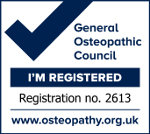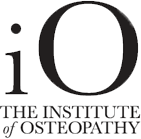
About Osteopathy
|

|
What is osteopathy ?
Osteopathy is a modern form of healthcare, involving highly skilled diagnosis and treatment, supported by practical lifestyle advice to enable patients to maintain optimum physical health. Regulated by statute under the Osteopaths Act 1993, UK osteopaths are subject to a clear structure of training, supervision and professional development.
The basis of osteopathy
Osteopathy is a system of diagnosis and treatment for a wide range of musculoskeletal conditions. It works with the structure and function of the body, and is based on the principle that the well-being of an individual depends on the skeleton, muscles, ligaments and connective tissues functioning smoothly together.
To an osteopath, for your body to work well, its structure must also work well. So osteopaths work to restore your body to a state of balance, where possible without the use of drugs or surgery. Osteopaths use touch, physical manipulation, stretching and massage to increase the mobility of joints, to relieve muscle tension, to enhance the blood supply to tissues, and to help your body's own healing mechanisms. They may also provide advice on posture and exercise to aid recovery, promote health and prevent symptoms recurring.
Regulation of osteopathy
All osteopaths in the UK are regulated by the General Osteopathic Council (GOsC). It is against the law for anyone to call themselves an osteopath unless they are registered with the GOsC, which sets and promotes high standards of competency, conduct and safety.
Who and what do osteopaths treat?
Osteopaths' patients include the young, older people, manual workers, office professionals and sports people. Patients seek treatment for a wide variety of conditions, including back pain, changes to posture in pregnancy, postural problems caused by driving or work strain, the pain of arthritis and minor sports injuries.
Further Information
Every circumstance is different, so for a consultation and advice on whether and how osteopathy can help you, please contact us.


